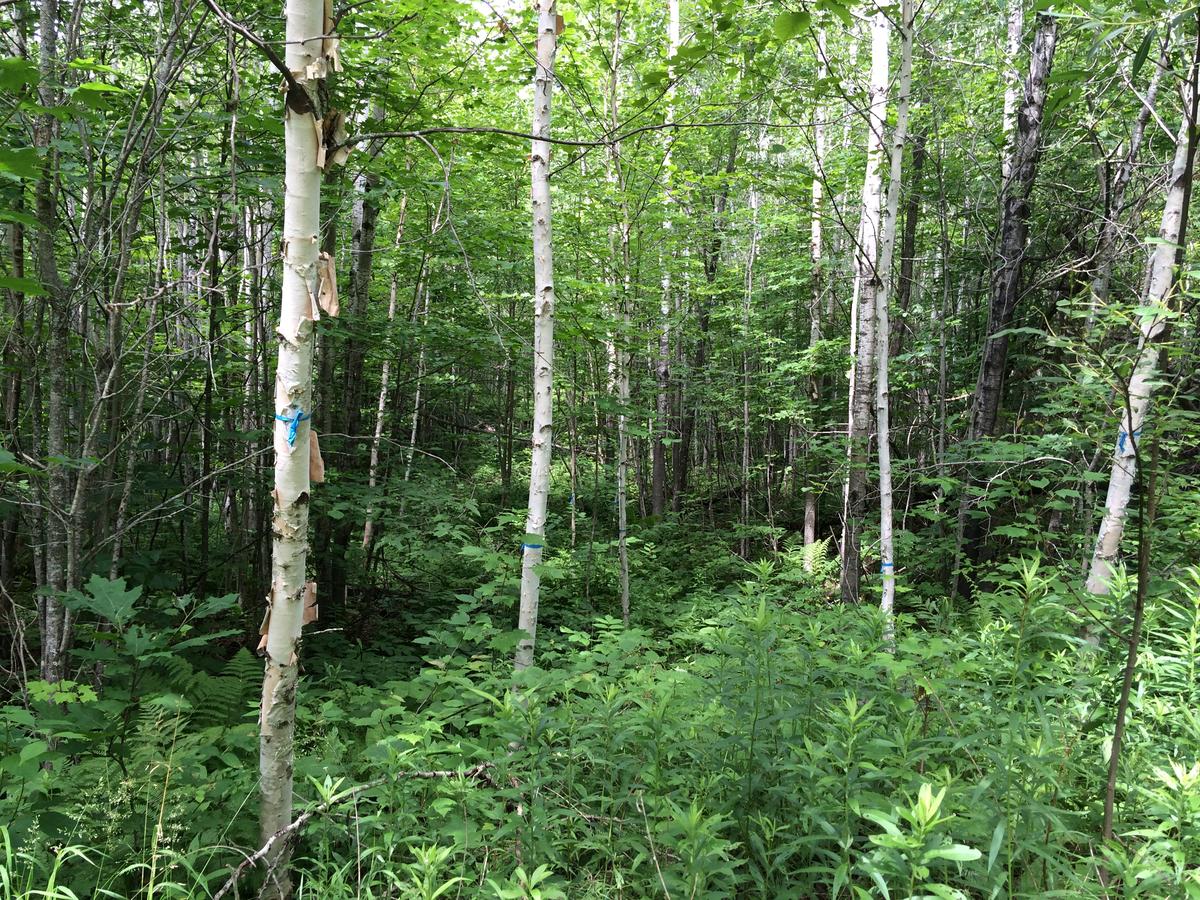Silviculture Objective(s)
Precommercial free thinning at age 20 to reduce aspen dominance and favor northern hardwood species.
Pre-treatment stand description and condition
Stand establishment and management history:
Timber harvest in summer and winter of 1991. Average stand age approx. 65-70 years.
Silviculture prescription for the 1991 treatment: Cut all live hardwood trees 2” DBH and greater; cut all live softwood trees 5” DBH and greater; except: do not cut: black ash, yellow birch, black spruce, or tamarack. Only cut painted red oak and white pine (23 red oak with 2-line chestnut borer dieback were cut, and 6 white pine with blister rust were cut).
Pre-treatment species composition:
Volume harvested in 1991 by species:
Aspen 915 cd
P. Birch* 367 cd
Basswood 274 cd
S. Maple* 167 cd
R Oak 74 cd
W. Pine 12 cd
TOTAL 1,809 cd
Refer to Table 1 for the results of a 2010 regeneration survey, completed shortly before the hardwood crown release described below.
Table 1: Regen survey results from 2010, pre-hardwood crown release
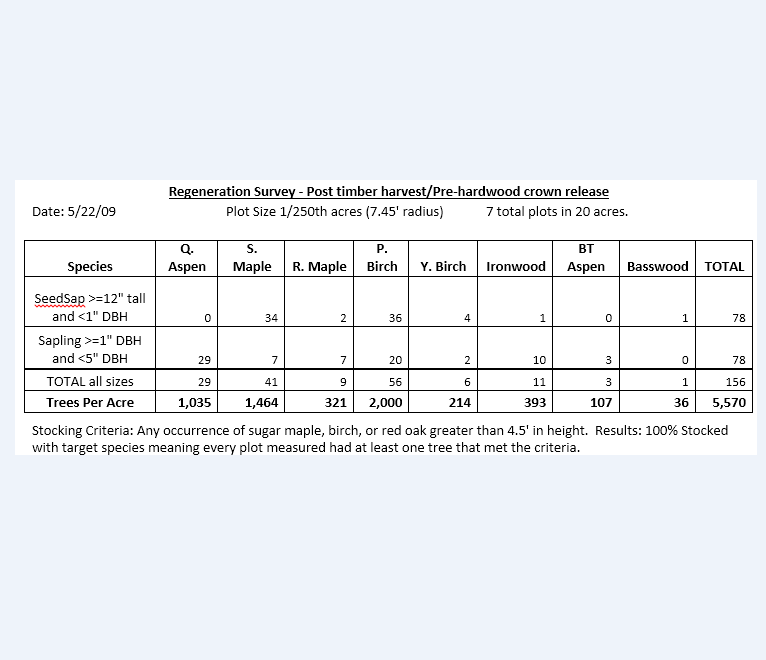
Silviculture Prescription
Fond du Lac’s primary forest covertype is aspen (quaking) comprising nearly 60% of total forested covertypes. Only 13% of the primary forest covertypes are northern hardwoods (a mix of species including sugar maple, basswood, and yellowbirch). Where the habitat type is suitable for hardwood growth, the forestry program is trying to increase the amount of northern hardwood primary covertypes.
Crown release of desired species by free thinning (combination of crown and selection thinning) of competing non-hardwood species. Crop trees are identified and non-crop trees whose crowns are within 3-4 feet of the crop tree’s crown are cut on at least 3 sides. Crop trees include paper birch, red oak, ash, yellow birch, and sugar maple. Conifer species on this site are rare and are also considered crop species. They include primarily white pine, white spruce, and balsam fir. The primary competing non-crop species is quaking aspen whose growth surpasses the hardwood growth because it is growing from an already well-established root system.
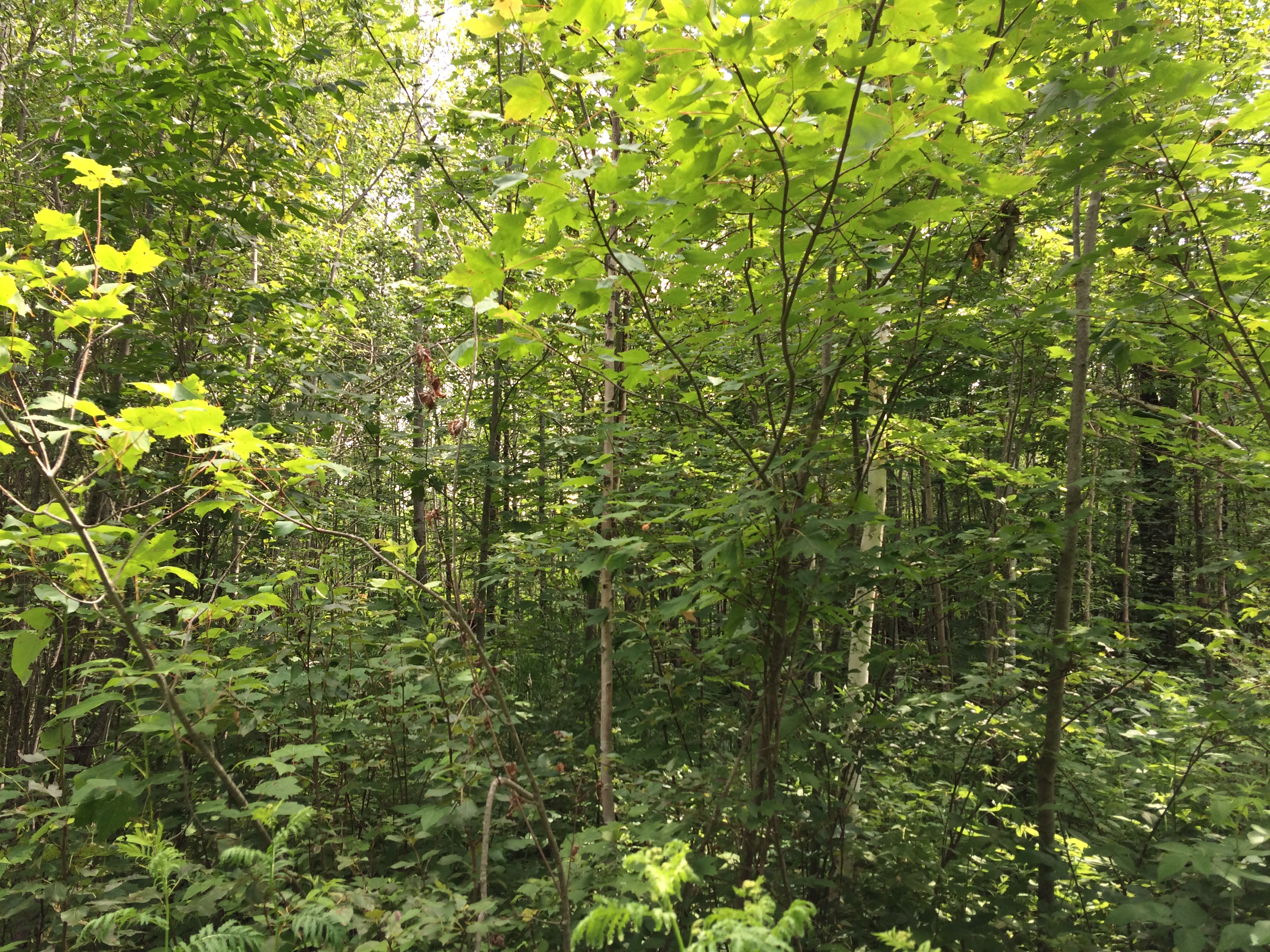
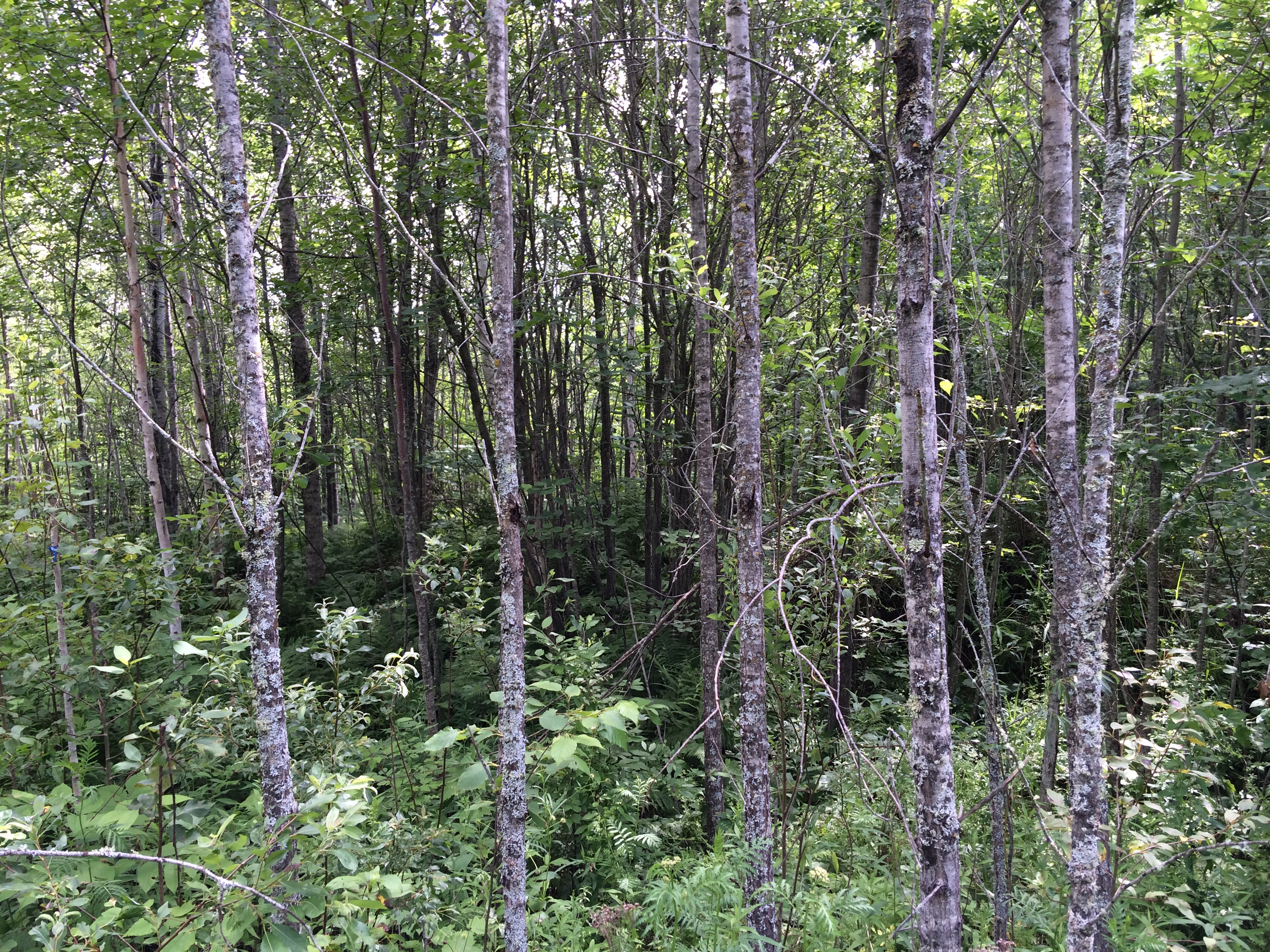
Figures 1&2: Typical untreated areas in the FDL Maki Rd thinning site
What actually happened during the treatment
Crop trees were flagged ahead of time which allowed cutting crews to focus on cutting and not worry about spacing, tree id, prioritizing species, etc. This worked well. Crews were instructed to cut or sever all stems within approx. 6 feet, where crowns were in competition with flagged crop trees. Work was done using chainsaws. Severed stems were bucked to lie flat and left in the woods.
Post-treatment assessment
Refer to Table 2 for post-treatment data by species and size class.
Table 2: Survey results post-hardwood crown release square

Data collection methodology for pre- and post-release (Tables 1 & 2):
Randomly distributed fixed-radius circular plots, 1/250th acre in size. Plot locations were different during both measurement periods. Tally all commercial tree species <5" dbh and >12" in height within plot radius in 2 size classes. Plot is considered stocked if it meets above noted stocking criteria
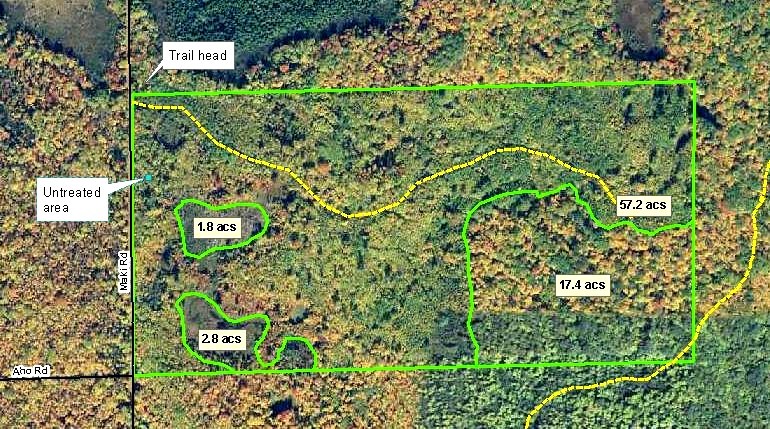
Figure 3: FDL Maki Road thinning site map
Basal Area: At each plot in the post-thinning survey a 10-factor prism was used to measure basal area of trees => 5" DBH. There should be no difference between the pre and post-thinning basal area as no trees larger than 5" DBH were cut during the thinning.
The goal on these sites was to try and maintain the diversity present on the site by favoring rare species (primarily birch (paper and yellow), oak, elm, basswood, and pine, and disfavoring aspen, which generally dominated most areas. We marked crop trees and then a chainsaw crew followed up by cutting anything that was in crown competition about 6’ around each marked stem. Anecdotally it really helped maintain species that were otherwise being overtaken by aspen.
It’s labor intensive, but instead of a stand that would ultimately end up 85% aspen and 15% “other”, we probably bumped it something more like 60% aspen and 40% “other”. In 45 more years we can go in and remove the ~65 year old aspen and paper birch while leaving everything else and probably end up with 20% aspen and 80% “other”. We don’t have a lot of nice northern hardwood stands so maintaining or enhancing them where we can is important.
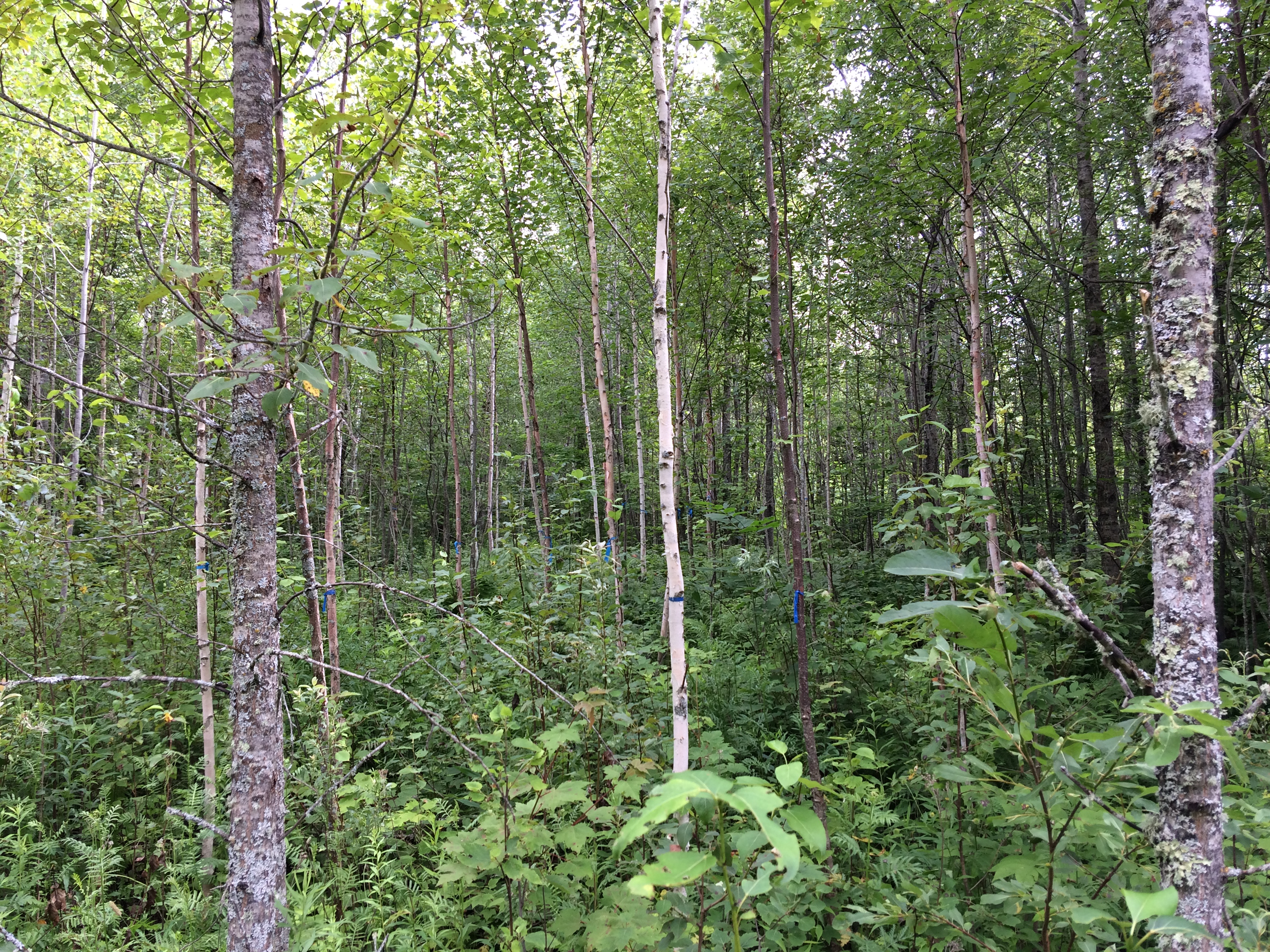
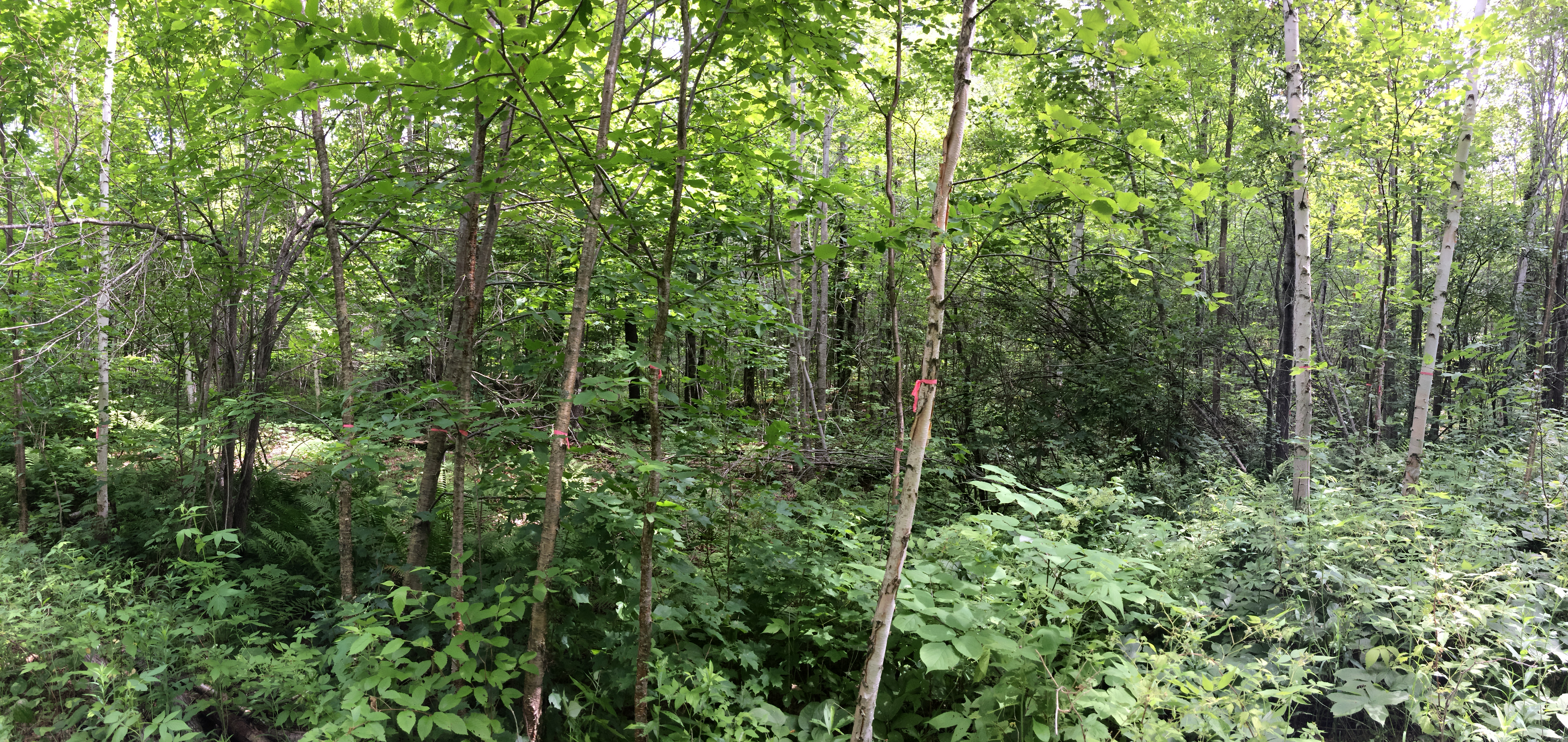

Figures 4, 5, & 6: Treated patches showing released paper birch stems
Plans for future treatments
The site will be evaluated in a few years to determine if follow-up release work is needed or if we’ve accomplished our primary objective of maintaining tree species diversity. If crop trees are being overtopped by aspen more work will be needed. If crop trees remain competitive, we’ll call the project successful as-is.
Costs and economic considerations
This project was labor intensive. Three people flagged crop trees for about 1 day each (24 labor hours). Saw crews of between 5 and 8 people worked on this project for several weeks. Exact cost information is not available at this time.
Summary / lessons learned / additional thoughts
If we were to do this again we’d probably increase the diameter we cut around each stem from 6’ up to 8-9’ as the crowns are surprisingly tight again just 3-5 years later.
In areas that were summer harvested the aspen competition was greatly reduced compared to winter harvest areas. If summer harvest is not an option, consider retaining a few aspen per acre to suppress suckering.
Stand entry probably would have been optimal 8-12 years after initial harvest. Any sooner than this and it wouldn’t be obvious which trees were doing well enough to consider crop trees and which trees were in crown competition with crop trees would have been less obvious. Waiting longer than 8-12 years post-harvest, as in this project, probably resulted in the loss of some desired trees, slower growth as crowns had already closed, etc.
Thoroughly covering all ground proved challenging. Sectioning off areas into smaller units using natural breaks, trails, roads, or flagging, may make areas easier to fully cover and for crews to organize and distribute themselves.
